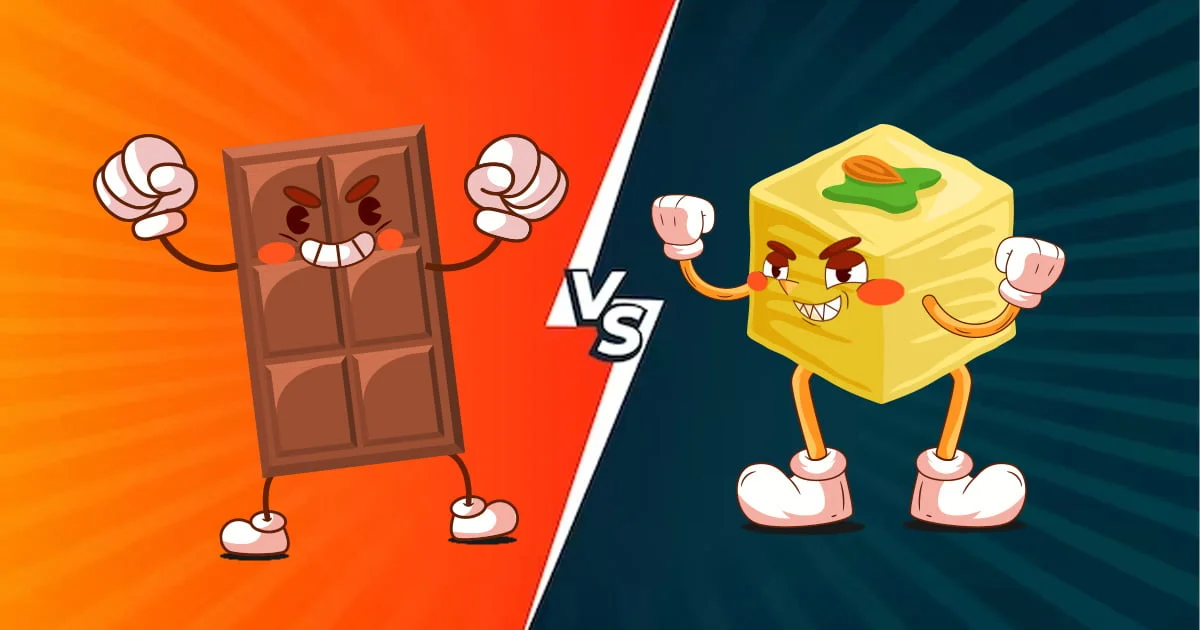Are you opting for chocolates this Diwali, or sticking to the timeless tradition of laddu or soan papdi? India, a land of sweets, traditions, and festivals, doesn’t reserve the enjoyment of sweets for special occasions; it’s ingrained in daily rituals. India’s sweetness isn’t just reflected in its friendly demeanour but also in its love for sugar. However, over the past decade, chocolates have emerged as a not-so-sweet competitor. No longer exclusive to children, chocolates are now an indulgence for adults, especially favoured as gifts on special occasions. The increasing popularity can be linked to the health-conscious decisions made by young people, as sugar is perceived as highly detrimental, while chocolates are not considered as harmful as traditional sweets.
However, have you observed that the sweet rivalry is gradually transforming into a marketing competition? Initially, chocolate companies initiated this shift by introducing various flavours such as Kalakand or marketing their products as “Mithai” to compete with the extensive sweets market. Since sweets are an integral part of rituals, chocolate brands initially attempted to portray them as a tradition, employing famous approaches like Cadbury’s “Subharambh” and “Kuch Mitha Ho Jaye,” which associated the ritual of consuming something sweet before embarking on an important task. Eventually, chocolates began to be incorporated into celebratory occasions.
So, how did sweets respond to this challenge? Prominent sweet and bhujia brands began producing sweets with chocolate flavours. Even local sweet shops joined the trend by creating chocolate mousse and chocolate-flavoured treats such as “Chocolate Sandesh.” Now, breaking news is that even a longstanding brand like Haldiram’s, which has dominated the sweets and bhujia market for decades, is venturing into the world of chocolates.
Is it acceptable to compromise the brand identity to compete with chocolate giants like Ferrero Rocher? When a well-established sweets and bhujia company ventures into chocolate production to rival foreign brands, it risks diluting its established brand identity. The core image associated with traditional, artisanal sweets may clash with the introduction of chocolates, potentially confusing and alienating existing customers. This diversification could create a perception of inconsistency, eroding the brand’s authenticity and expertise.
Moreover, foreign chocolates, often symbols of luxury and exclusivity, are purchased not only for consumption but also as symbols of prestige. If Haldiram’s chocolates fail to match this perceived prestige, consumers may not see them as status symbols.
On the flip side, the Indian chocolate market is thriving with a 10% CAGR, presenting a significant opportunity for Haldiram. Positioned as “Swadeshi,” Haldiram can tap into patriotic sentiments, leveraging its established goodwill. Offering both sweets and chocolates under one trusted brand can drive impulsive buying. Haldiram’s reputation for premium quality aligns well with the rising demand for indigenous chocolates, and a competitive price point can capture the attention of the middle-income group.
This sweets versus chocolate competition is now going beyond brand rivalry; it is embedding a clash of generations and the contrast between traditional and modern India. In conclusion, taking risks, especially when addressing customer pain points, is a commendable approach for progress. However, even for established brands like Haldiram’s, solid marketing and branding strategies are imperative. Venturing into uncertain territory without thorough research and understanding of customer sentiments can be perilous.
Though we’re not picking sides between chocolates and sweets; we’re all in for Team Marketers ! With a steaming cup of “Brew” in hand, we’re ready to savour the sweet insights as the story unfolds.
Stay tuned for more such articles on Gr8 Brews!





